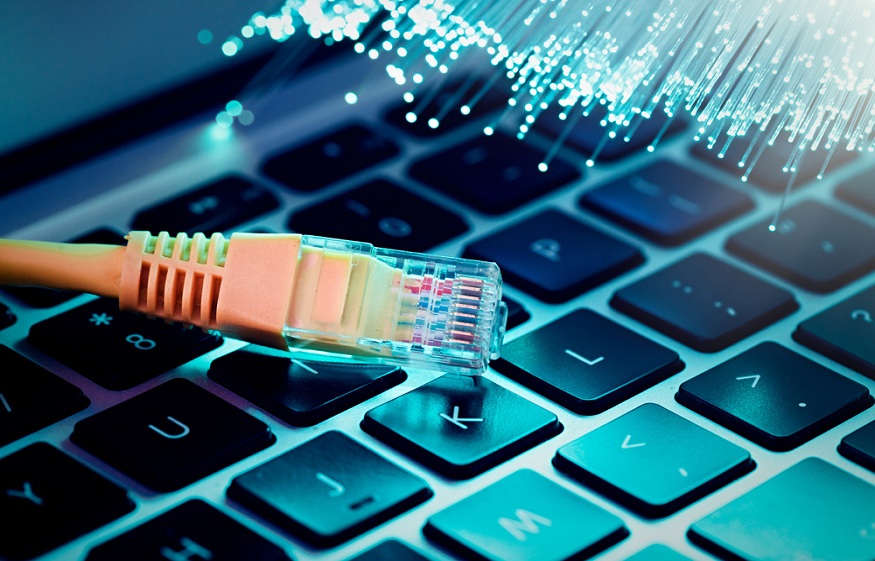Will Wireless Networks Ever Be as Fast as Wired?
My introduction to computer networks came by way of a rented PC and a dial-up modem. Way back then, connecting to a network consisted of dialing the number of a local bulletin board and letting my computer connect with theirs. That was a long time ago. Today, everything is much faster. Wireless is also the preferred protocol.

Internet cable, RJ-45 plug on laptop keyboard. High speed fiber optic internet concept
Thinking about that got me wondering whether wireless networks will ever be as fast as their wired counterparts. First, let me say that anything is possible. I will not say it will never happen. But there are several core issues I think make it highly unlikely that wireless networks will ever be as fast.
1. Signal Interference
Every data transmission involves some measure of interference. In the industry, we call it ‘noise’. Wireless networks have built-in technologies to reduce this noise. However, not all of it can be reduced or eliminated.
Wired networks are inherently less noisy. A wired network is a closed network subject to a lot less interference along its entire length. With less interference to deal with, data transfers are faster and more accurate. To date, there is just no way to clean up a wireless signal enough to make it comparable to a wired data transmission.
2. Latency Issues
The amount of delay involved in transmitting data over a network is known as latency. All networks, both wired and wireless, suffer from latency to some degree. It is just that wireless networks suffer more than wired ones.
Consider rural wireless internet. Blazing Hog is a Houston company that provides service through 4G technology. Their 4G rural internet is subject to the same latency you would expect from a 4G smartphone.
Likewise, satellite internet also suffers from latency issues. But with satellite, the latency tends to be greater than with 4G. Why? Biggest signals have traveled much farther under a satellite arrangement.
Wired signals also need to travel great distances. But they travel a lot faster because they are in a contained environment. It is comparable to sending water through a hose as opposed to trying to throw it through the air.
3. Environmental Influences
The icing on the cake is the environment. Both interference and latency are affected by all sorts of environmental influences ranging from weather to geography and man-made objects.
Going back to Blazing Hog for just one minute, its service operates pretty reliably in most areas. But things like mountains and forests can interfere with cell signals. Likewise, satellites are often disrupted by bad weather. A severe thunderstorm can knock out satellite internet for minutes or hours.
Once again, wireless networks are less influenced by the surrounding environment because they are closed networks. Data flows through fiber-optic cables, copper cables, or old-fashioned copper wires. In every instance, the cables or wires are wrapped in a protective plastic sleeve.
As long as cables or wires are not broken and have a sufficient amount of current running through them, data flows freely. Transmission is not interrupted by storms, wind, tall buildings, or anything else.
Both Will Get Better
It is reasonable to assume that both wired and wireless networks will continue to get better over time. Just in the last 20 years, we have gone from copper phone lines to fiber-optic cables for wired connections. Wireless has evolved through four generations of technology; we’re now up to 5G.
Despite improvements in both, it is hard to imagine a time when wireless networks will be as fast as their wired counterparts. Their very nature defies that possibility on multiple levels. I may eventually be proved wrong, but I doubt it.



